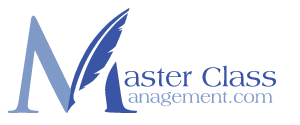Lesson Summary
- Operations Management can cover a wide list of responsibilities. It controls the day-to-day functions of a company. It is a transformation process regarding any activity or group of activities that takes one or more inputs, transforms and adds value to them, and provides outputs for customers or clients.
- Whether your company is product based or service based, or both, the functions of Operations Management are always the same: (1) designing, (2) planning, (3) organizing, (4) directing, and (5) controlling.
- Cost-benefit analysis is a tool used to see if an investment is worth pursuing. Break-even analysis lets you find when you first start making profit, and Crossover Analysis lets you identify the point where you should switch from one type of product to another one that has similar benefits, but different fixed and variable costs.
- Critical Path Method (CPM) is a tool that helps plan and coordinate tasks and activities in a project. Gantt Charts, PERT and Decision Tree methods are also used. Microsoft Project is a great tool to use for Project Management.
- Supply Chain Management involves the flow of materials, information, and finances as they move in a process from supplier, to manufacturer, to wholesaler, to retailer, to consumer. Three levels of decisions associated with SCM are: Strategic, Tactical, and Operational. The five basic steps are: Plan, Source, Make, Deliver and Return.
- Quality Management ensures a product or service is effective and efficient, and is based on three main components: Quality control, Quality Assurance, and Quality Improvement.
- Inventory Management keeps track of goods and materials held available in stock. Sophisticated software not only keeps track of the goods and materials, but also creates invoices, purchase orders, and bar codes.
- Customer Service provides support to customers before, during, and after the purchase of a product or service. Three steps that are essential in providing great customer service are: Having a customer friendly attitude, being technically proficient, and knowing the expectations, values and goals for the self and company. Use of surveys should be used to measure satisfaction levels. Surveys show that customers want:
- Knowledgeable employees who can identify the customers’ true needs.
- First call resolution (no repeat issues).
- To be treated with respect and that they are truly valued.
- An employee who is truly trying to meet their needs.
- To be taken care of as quickly as possible.
- “IS” is the area that includes the company's computers, specialized software programming, and data communications regarding the company’s networking needs, whereas “IT” has the responsibility for implementing, installing, and maintaining the information infrastructure. They are sometimes both intertwined as one group.
- HR is one of the most necessary departments in a corporate company environment. They have to be able to handle a crisis in a smooth, discreet manner, whether it is a health care issue, sexual harassment, or employee disputes. They must also be trusted to keep an employee's personal details to themselves.
LESSON 9 - BUSINESS BASICS PART II - OPERATIONS MANAGEMENT, CUSTOMER SERVICE, IS & HR
The text of these materials, or any part thereof, may not be reproduced or transmitted in any form or by any means, electronic or mechanical, including photocopying, recording, storing in an informational retrieval system or otherwise, except for students own personal use. The author does specifically disclaim any responsibility for any liability, loss, or risk, personal or otherwise, which is incurred as a consequence, directly or indirectly, of the use and application of any of the contents of this course.
© 2009-2025 MasterClassManagement.com All Rights Reserved
Page 108
Lesson 9 - Conclusion Video





